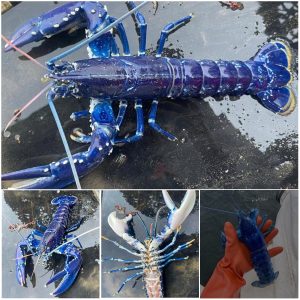Many birds were favored glittering iridescent plumage since birth. This charismatic coat certainly makes a name for these creatures and enables them to be conspicuous whenever they appear. If you get an opportunity to see these birds in nature, make sure that you grasp it.
1 / 8
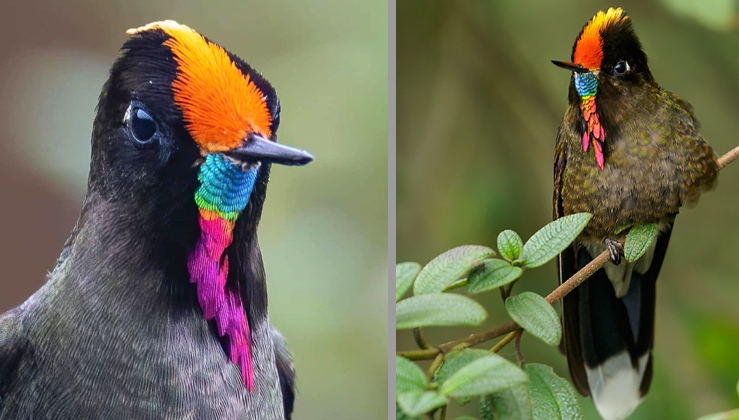
The rainbow-bearded thornbill (Chalcostigma herrani) is among these outstanding birds. As its name may suggest, this bird wears a rainbow of color on its face. Its head is dark green with a long, rufous crest on top and a white dot behind each eye. Take a closer look at its throat, it’s celadon-green turquoise, yellow, red, and pink. The long tail of these tiny birds is also eye-catching. It is a dark purple with prominent white tips at the corners. Image Credits: Instagram/hummingbirds_of_ecuador
2 / 8
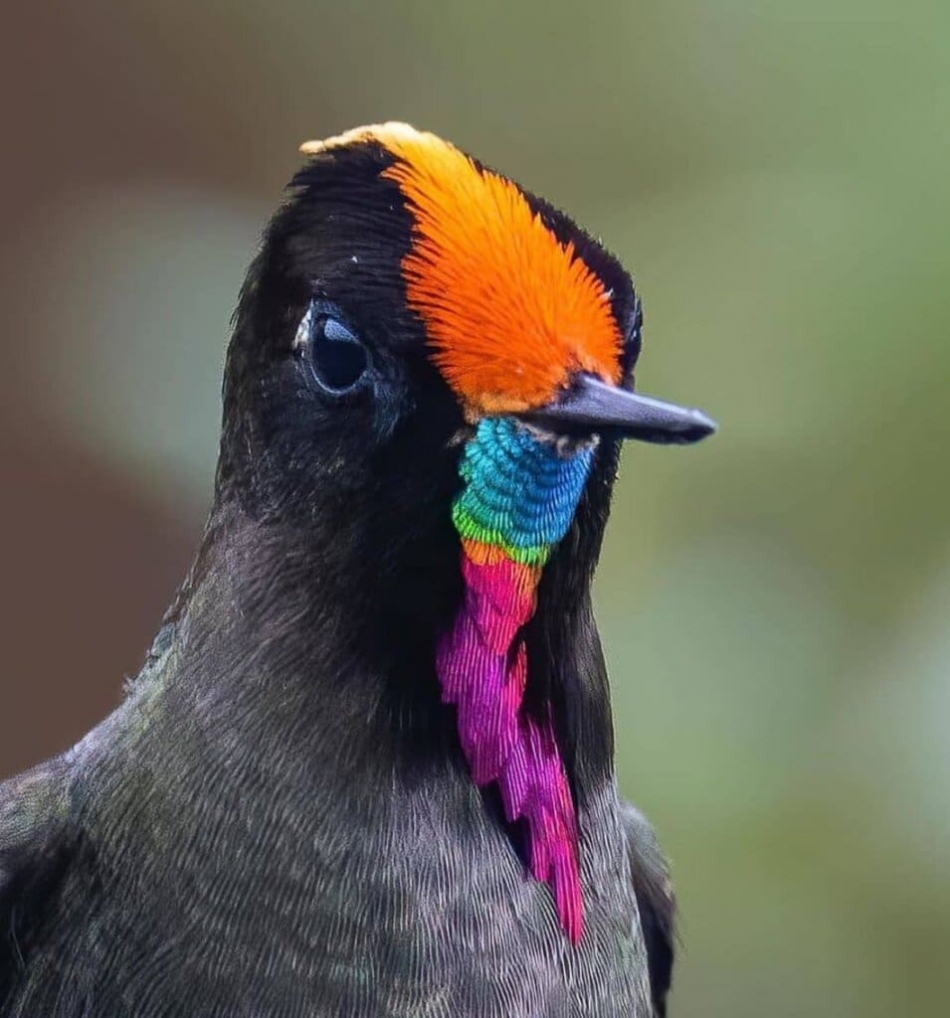
The rainbow-bearded thornbill is a species of hummingbird in the Trochilidae family. They distribute in Ecuador, Colombia, and Peru. These hummingbirds prefer living in subtropical or tropical high-altitude grassland, elfin forest, open country with bushy patches and small woodlands, and gulleys with thickets of ferns and bromeliads. Image Credits: Instagram/birdsonearth
3 / 8
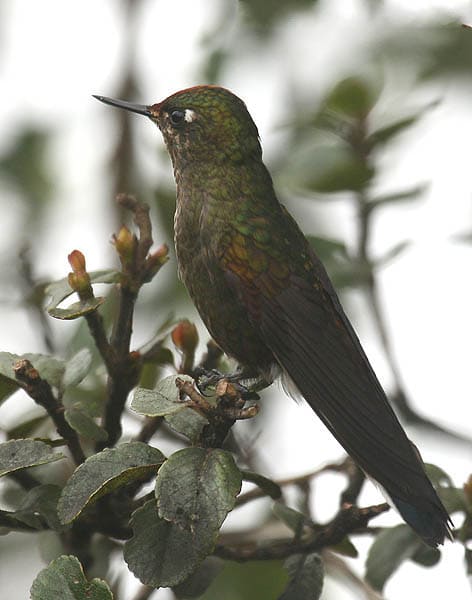
The Rainbow-bearded Thornbill is uncommon on the east slope of Andes, north and west of Maranon Valley. It is usually found at an altitude of 2,450-3,100 m in shrubby páramo, where it usually stays high up in the canopy. The Rainbow-bearded Thornbill averages 10.5 – 11 cm or 4 – 4.25 inches in length – including its long tail. Its beak is about 1 cm or 1.25 long. It is a dark-colored hummingbird with a rufous crown (top of the head) and a narrow glittering green and red gorget (throat patch). The upper tail coverts (feathers) are coppery-colored. The tail is purplish-blue with a white tip, and his back is green. Image Credits: Michael Woodruff / CC BY-SA 2.0
4 / 8
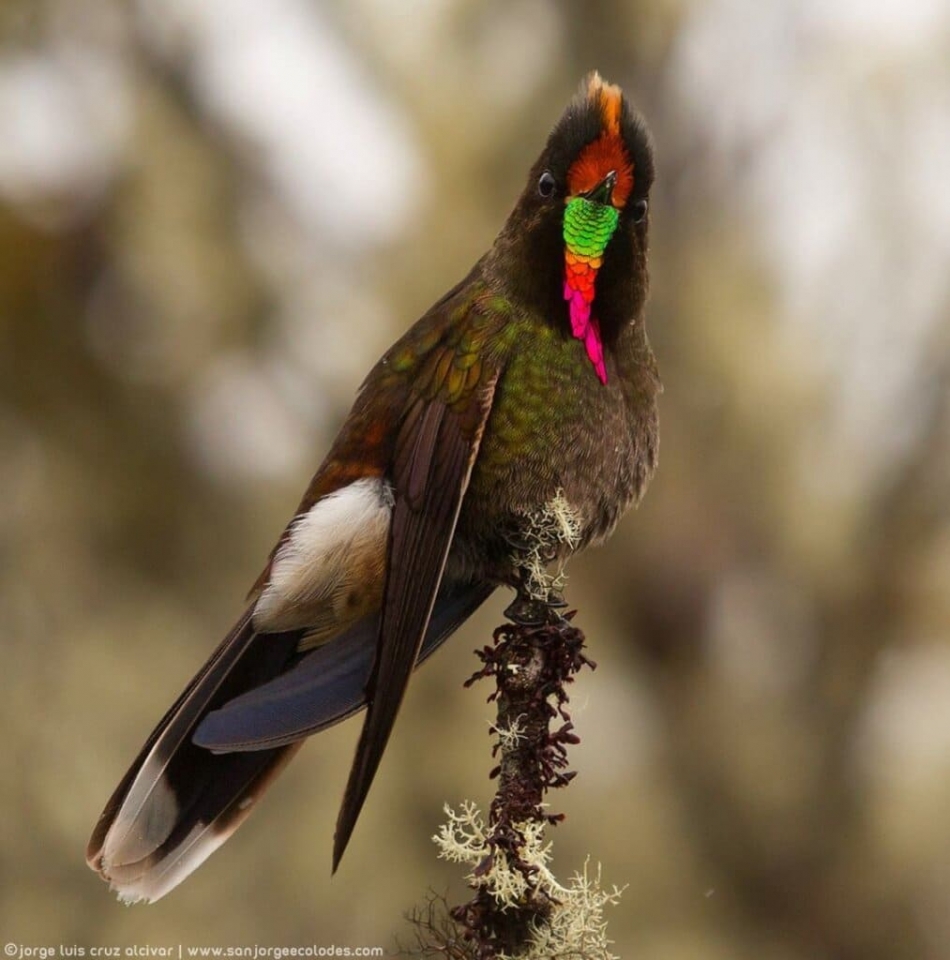
Female rainbow-bearded thornbill birds look quite similar to males even though they are a bit duller. Their belly and tail are covered with yellowish-ochre color. They also lack the gorgeous beard of the male, like young birds. During the breeding season, female rainbow-bearded thornbill birds build nests in a bush, shrub, or tree on their own. This cup-shaped nest is made from woven plant fibers, green moss, soft plant fibers, animal hair, and feathers. Similar species: The Rufous-capped Thornbill – smaller than the Rainbow-bearded Thornbill with buff-colored underparts. Image Credits: Instagram/hummingbirds_of_ecuador
5 / 8
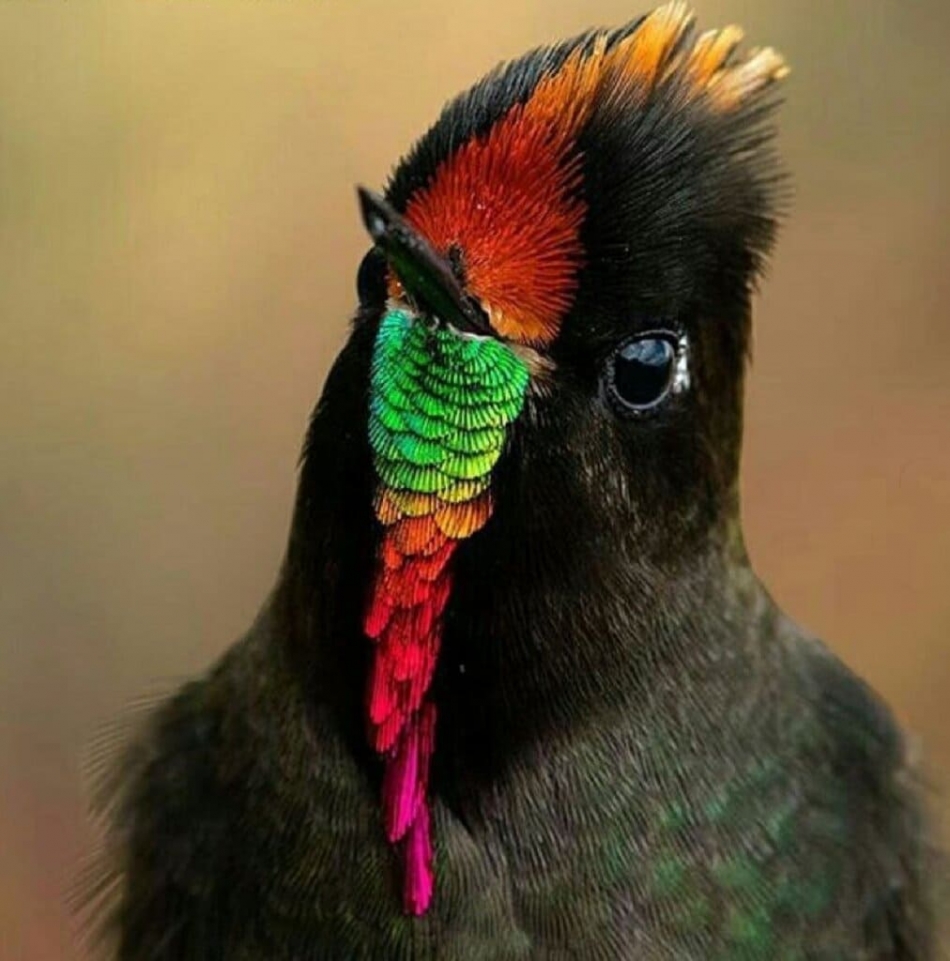
These beautiful hummingbirds are solitary in all aspects of life other than breeding; and the male’s only involvement in the reproductive process is the actual mating with the female. They neither live nor migrate in flocks; and there is no pair bond for this species. Males court females by flying in a u-shaped pattern in front of them. He will separate from the female immediately after copulation. One male may mate with several females. In all likelihood, the female will also mate with several males. The males do not participate in choosing the nest location, building the nest or raising the chicks. Image Credits: Instagram/shahbaz_birds
6 / 8

The female alone protects and feeds the chicks with regurgitated food (mostly partially-digested insects since nectar is an insufficient source of protein for the growing chicks). The female pushes the food down the chicks’ throats with her long bill directly into their stomachs. As is the case with other hummingbird species, the chicks are brooded only the first week or two, and left alone even on cooler nights after about 12 days – probably due to the small nest size. The chicks leave the nest when they are about 7 – 10 days old. Image Credits: Instagram/faunadaily
7 / 8
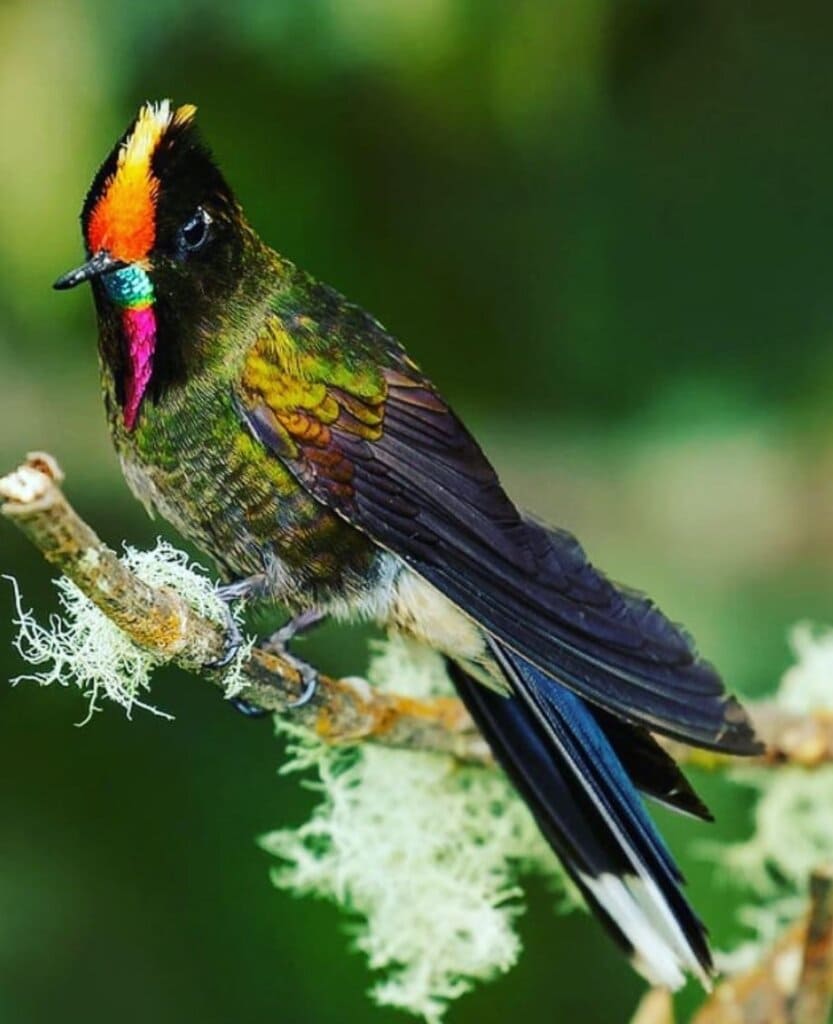
The Rainbow-bearded Thornbills primarily feed on nectar taken from a variety of brightly colored, scented small flowers of trees, herbs, shrubs and epiphytes. They favor flowers with the highest sugar content (often red-colored and tubular-shaped) and seek out, and aggressively protect, those areas containing flowers with high energy nectar.They use their long, extendible, straw-like tongues to retrieve the nectar while hovering with their tails cocked upward as they are licking at the nectar up to 13 times per second. Sometimes they may be seen hanging on the flower while feeding. A nesting female can capture up to 2,000 insects a day. Image Credits: Instagram/dozia.boi
8 / 8
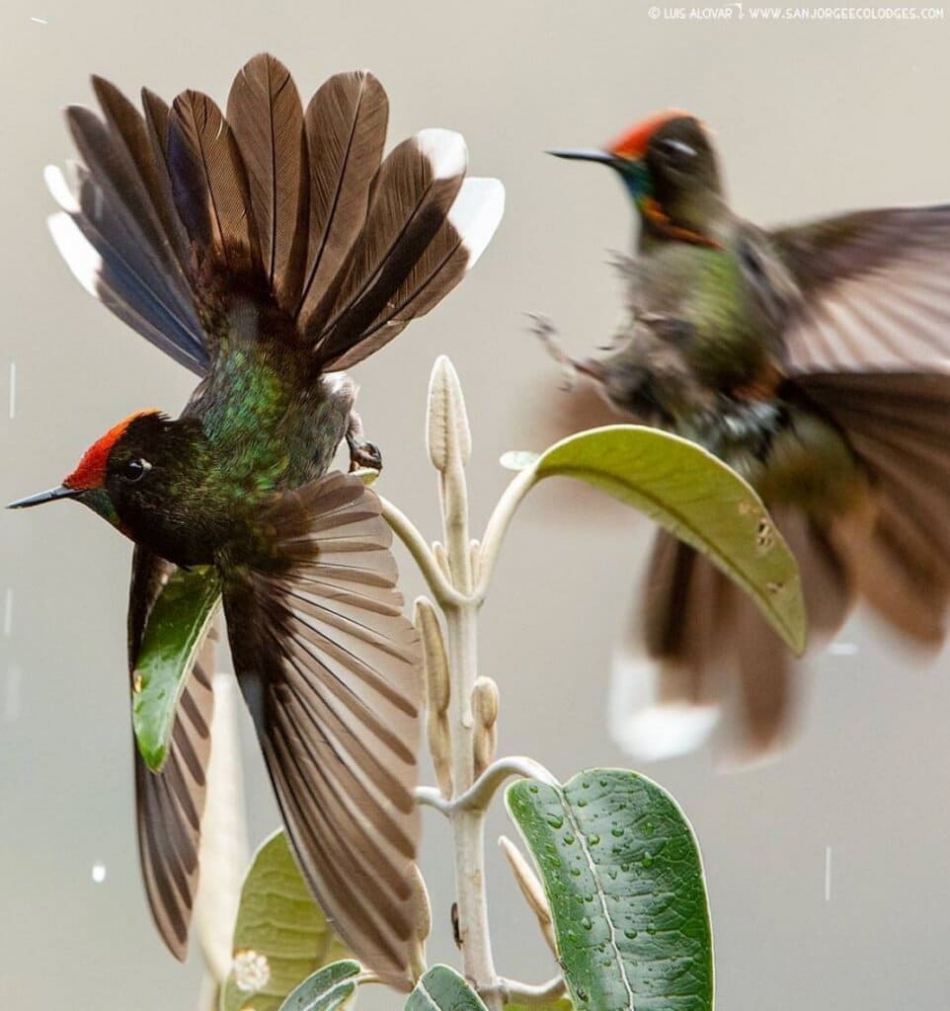
Let’s discover the stunning beauty of this bird below.
If you love these gorgeous little birds, just share the article with your family and friends. Nature is awesome! Image Credits: Instagram/magic.birding



